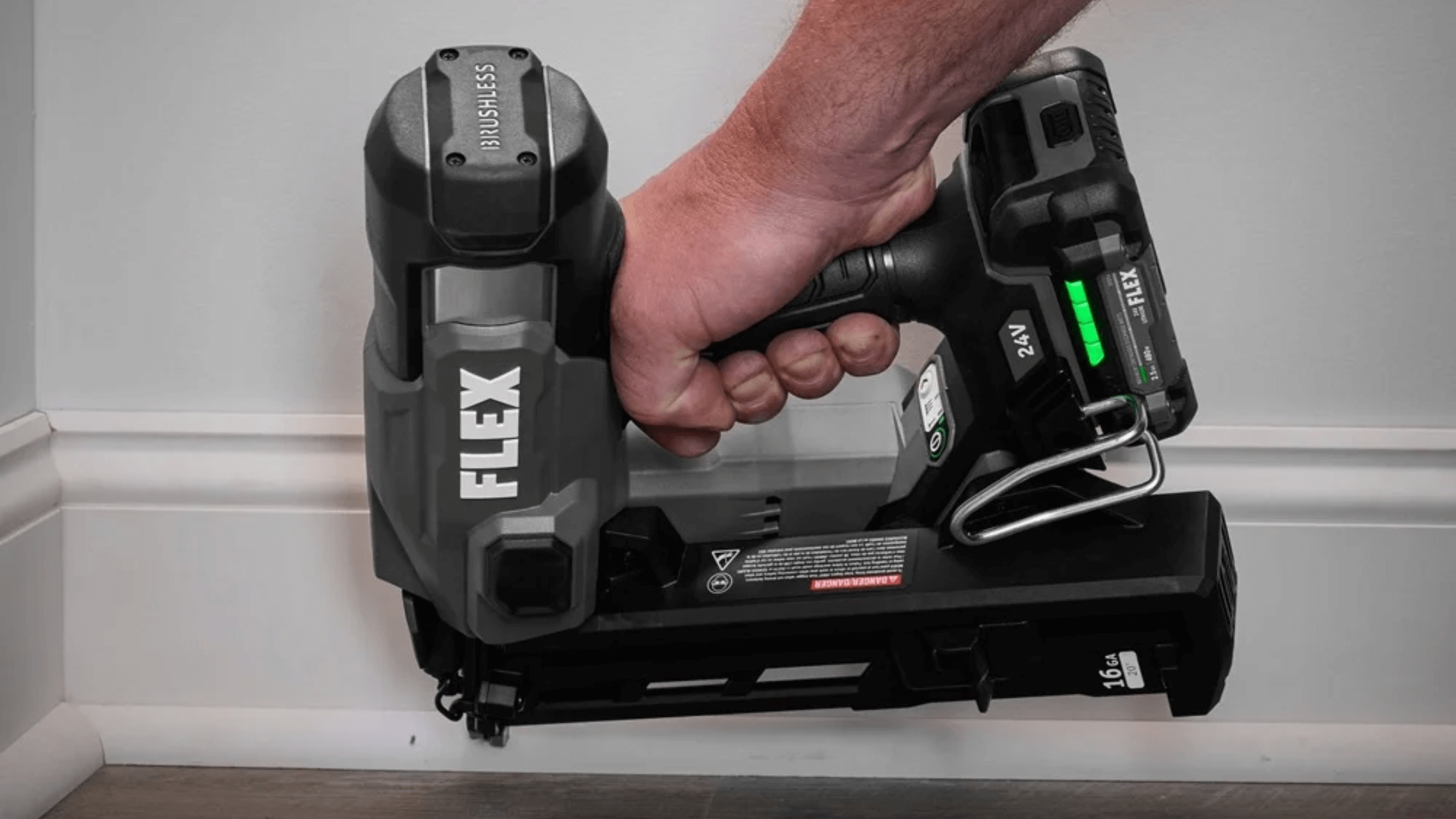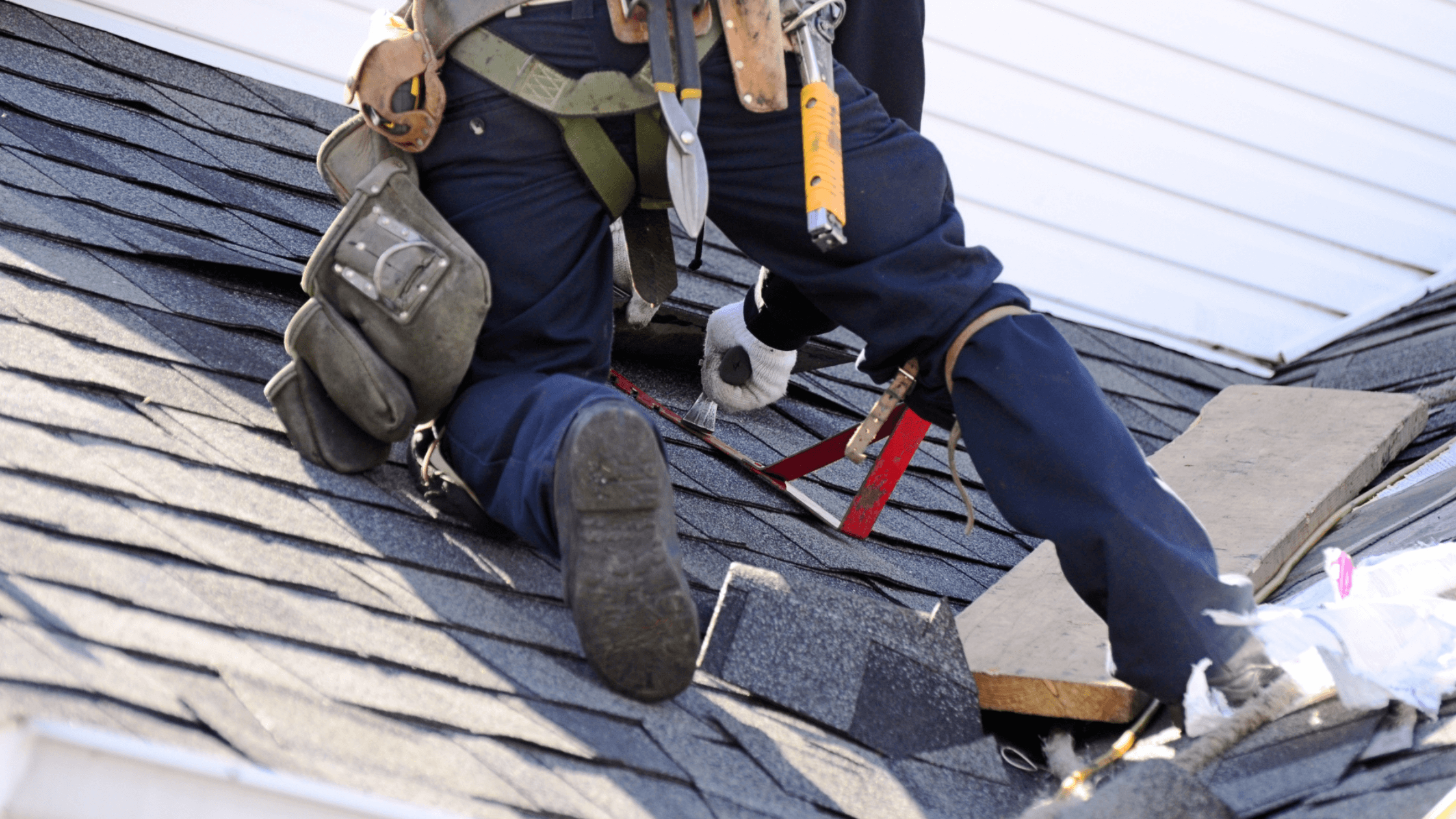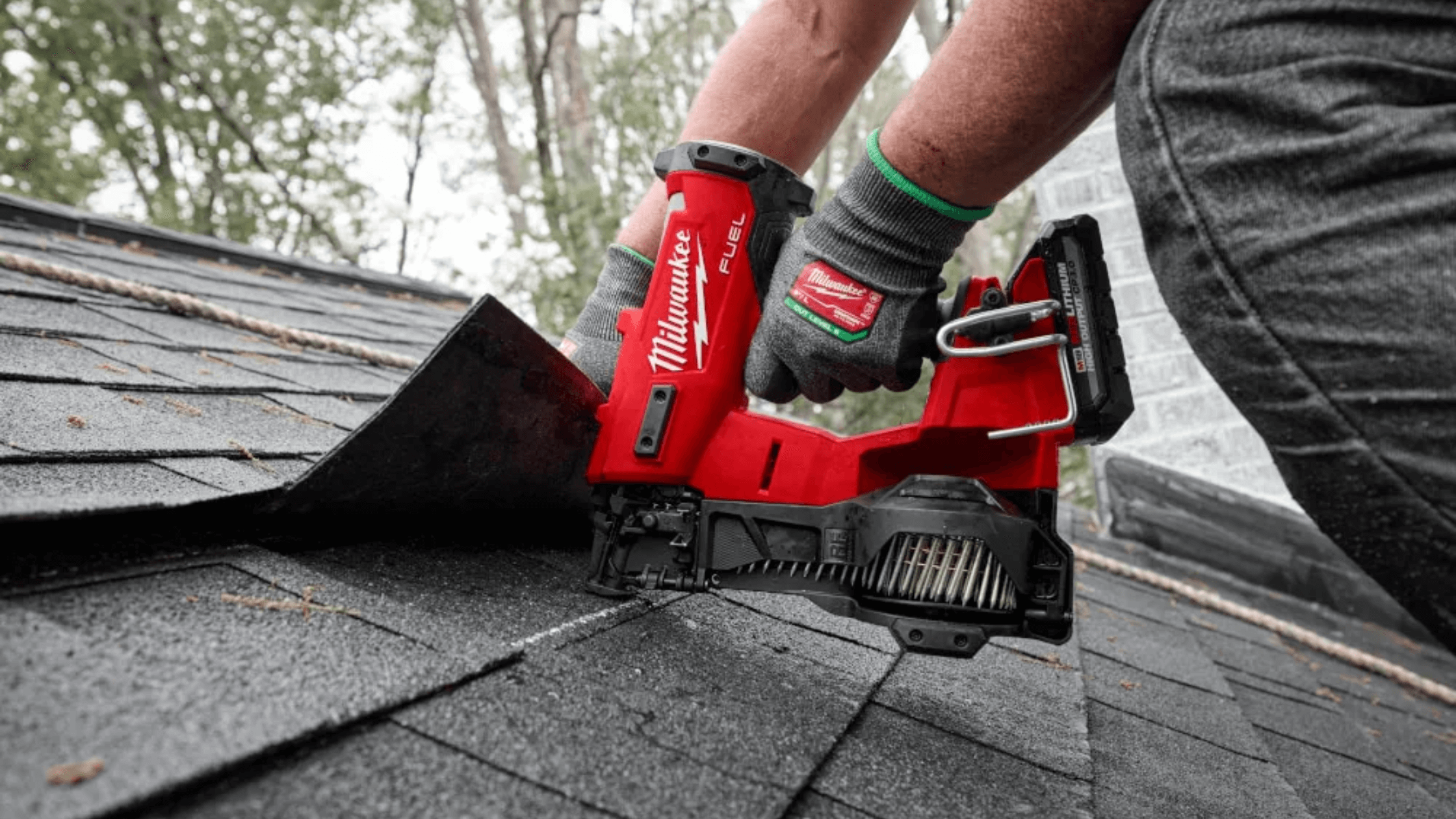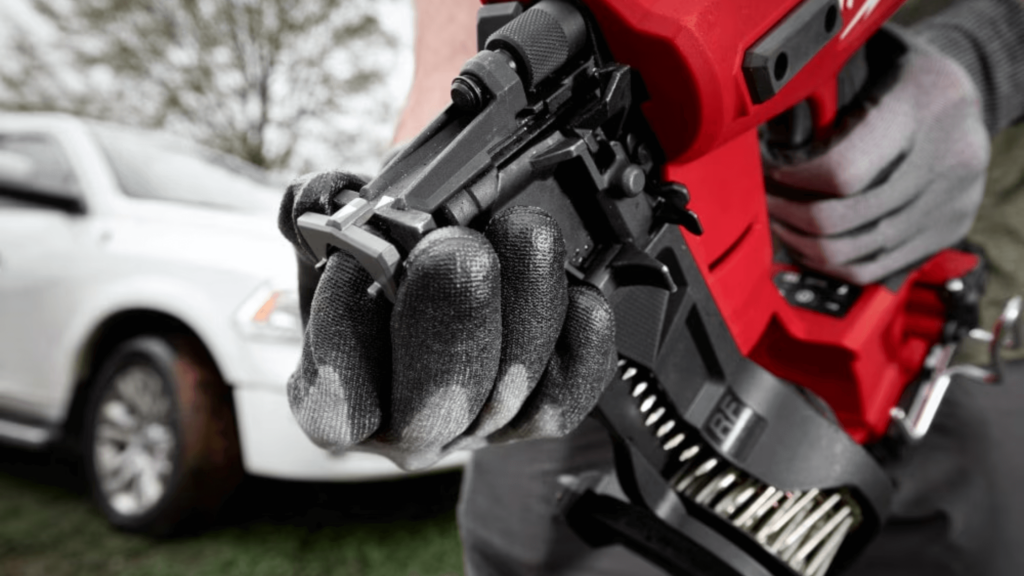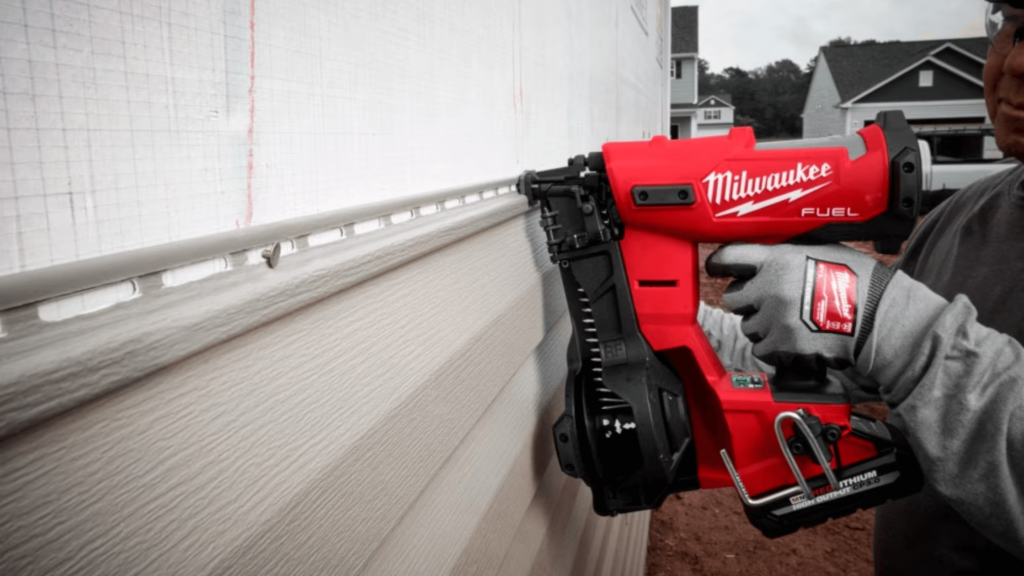If you’re planning a home improvement project or starting professional carpentry work, having the right nailer or stapler can save you time and effort. FLEX offers a range of tools designed to cover tasks from light trim work to heavy framing. Whether you’re looking for a 23Ga pin nailer to handle delicate trim work or a 16Ga straight finish nailer for building furniture and installing baseboards, FLEX has a range of tools to help.
FLEX nailer and stapler key features
Nailers and staplers come in different sizes, power sources, and styles, but many share similar benefits that help you complete projects quickly and accurately. Most models provide some sort of depth-of-drive adjustment so you can control how deep each fastener goes. Many also include convenient features like adjustable firing modes, jam release levers, and built-in lights for better visibility. Here’s a closer look at what you can expect from the current FLEX models:
- Cordless 24V battery system
- Depth-of-drive adjustment
- Selectable firing modes
- Tool-free jam release
- LED work light
- Belt hook
FLEX options
16Ga Straight Finish Nailer
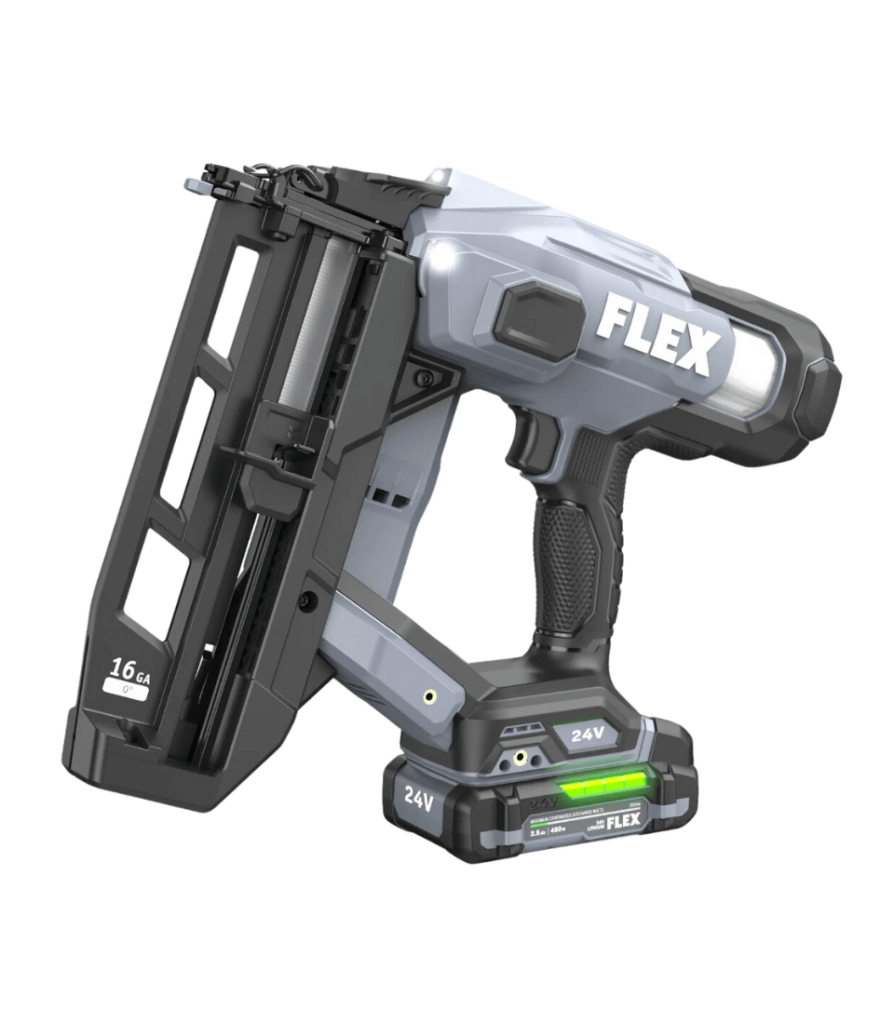
Features
- Accepts 3/4-inch to 2-1/2-inch 16-gauge fasteners
- Cordless design powered by a 24V battery system for easy mobility
- Drives up to 3 nails per second
- Tool-free jam release for quick clearing of stuck nails
- Adjustable depth settings to match different materials and project needs
- Dry-fire lockout to prevent firing when nails run out
- Weighs 6.28 lbs
The FLEX 16Ga Straight Finish Nailer is well-suited for tasks like installing trim, crown molding, and other finishing work. Users generally love the cordless design, which makes it convenient to use in spaces where air compressors or hoses would be impractical. While the tool includes standard features like depth adjustment and a dry-fire lockout, it sets itself apart with its consistent performance and durability. Several reviews have noted how it continues to perform well after extended use.
23Ga Pin Nailer Kit
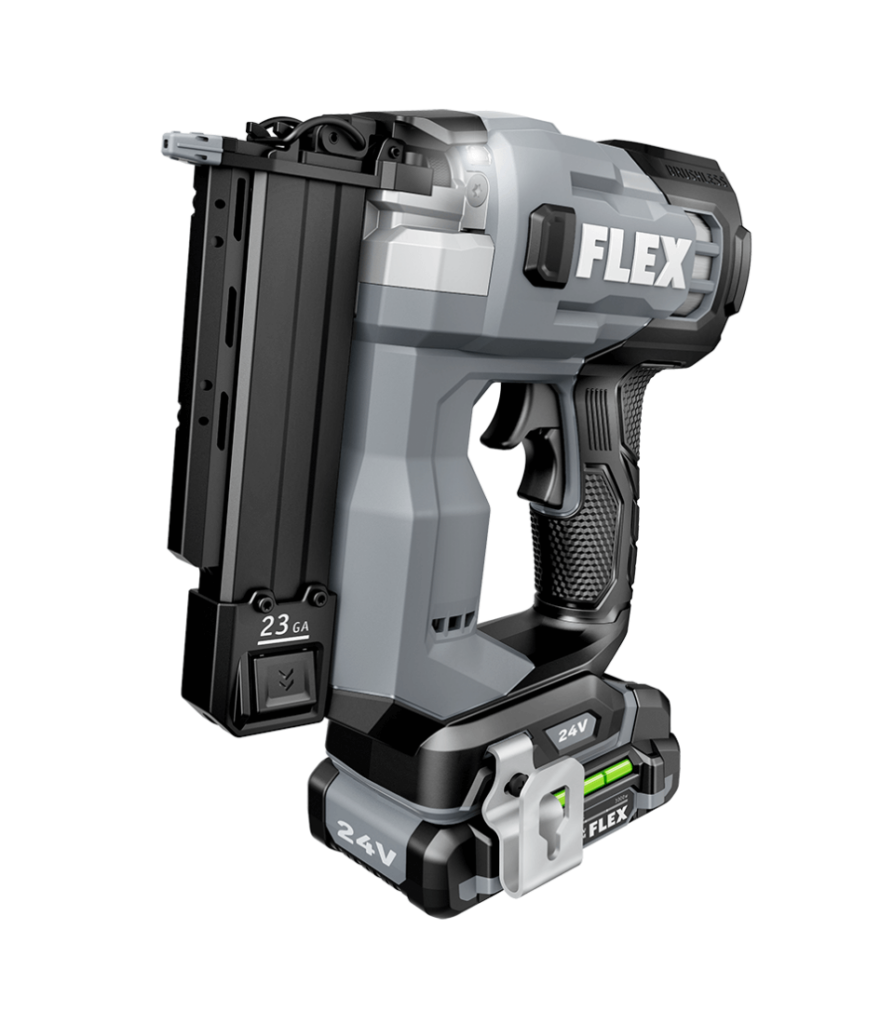
Features
- Magazine capacity of 120 nails
- Compatible with 23-gauge pins ranging from 5/8 inch to 1-1/2 inches
- Drives up to 3 nails per second with no ramp-up time
- Extended runtime, capable of driving up to 3,300 nails on a single charge
- Power adjustment dial for easily setting the desired nailing depth
- Dual LED lights for better visibility in low-light areas
The FLEX 23Ga Pin Nailer Kit is designed for precision work, making it ideal for tasks like cabinetry, trim, and detailed woodworking projects. Unlike the 16Ga Straight Finish Nailer, this tool uses thin 23-gauge pins that leave minimal marks, perfect for projects where aesthetics matter. Its compact design makes it easier to maneuver in tight spaces, while the cordless operation offers the same mobility as other FLEX tools. While it lacks the strength of larger finish nailers, its finesse and subtle results make it a top choice for fine woodworking and intricate details.
30° Framing Nailer Kit
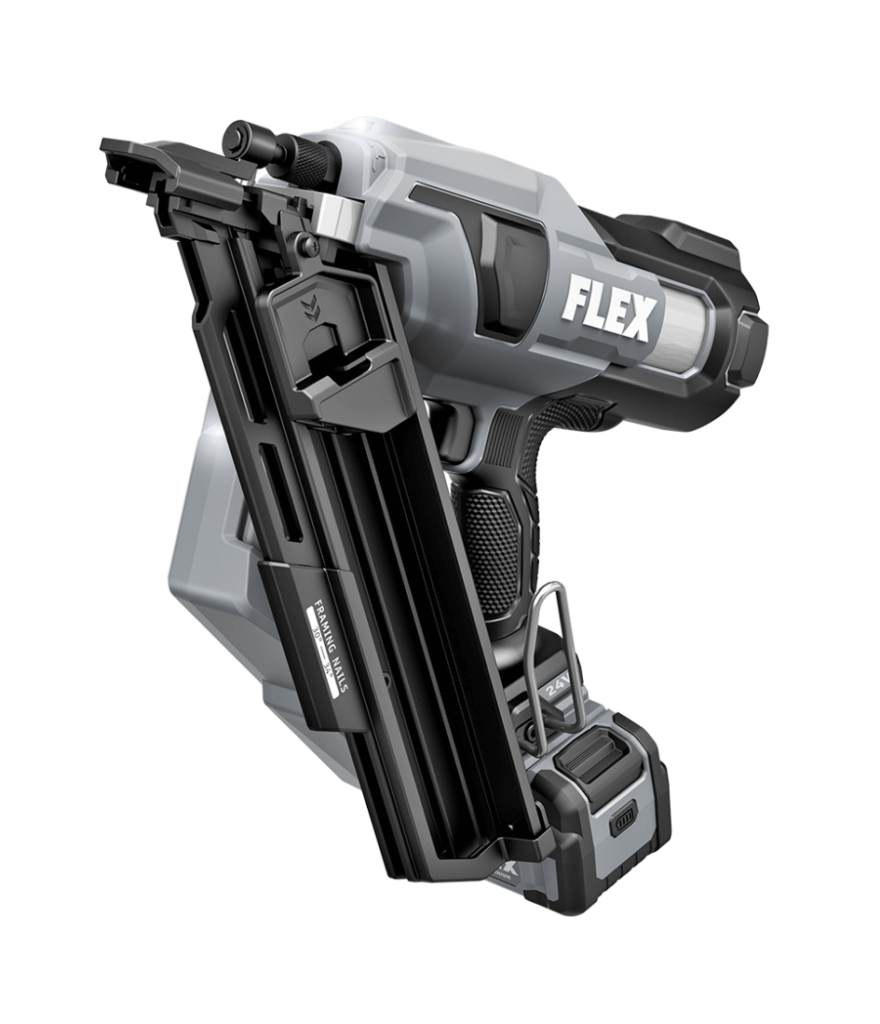
Features
- Weighs 9.33 lbs
- Compatible with 30-degree fasteners ranging from 2 inches to 3-1/2 inches
- High-speed performance, driving up to 3 nails per second without ramp-up time
- Capable of driving up to 1,100 nails on a 5.0Ah battery
- Depth adjustment dial to easily control nailing depth based on materials
- Magazine capacity of 53 nails
- 30-degree magazine angle makes it easy to change nails
The FLEX 30° Framing Nailer Kit is built for heavy-duty construction tasks like framing walls, floors, and roofing. Unlike finish or pin nailers, it handles larger nails, offering the strength required for structural work. Its 30-degree angled magazine allows for better access in tight corners, making it more versatile than framing nailers with lower-degree magazines. While its power and extended runtime are appreciated, the tool’s weight can make it less comfortable for prolonged use. This nailer is an excellent choice for contractors and DIYers needing a portable tool for demanding projects.
15Ga Angled Finish Nailer
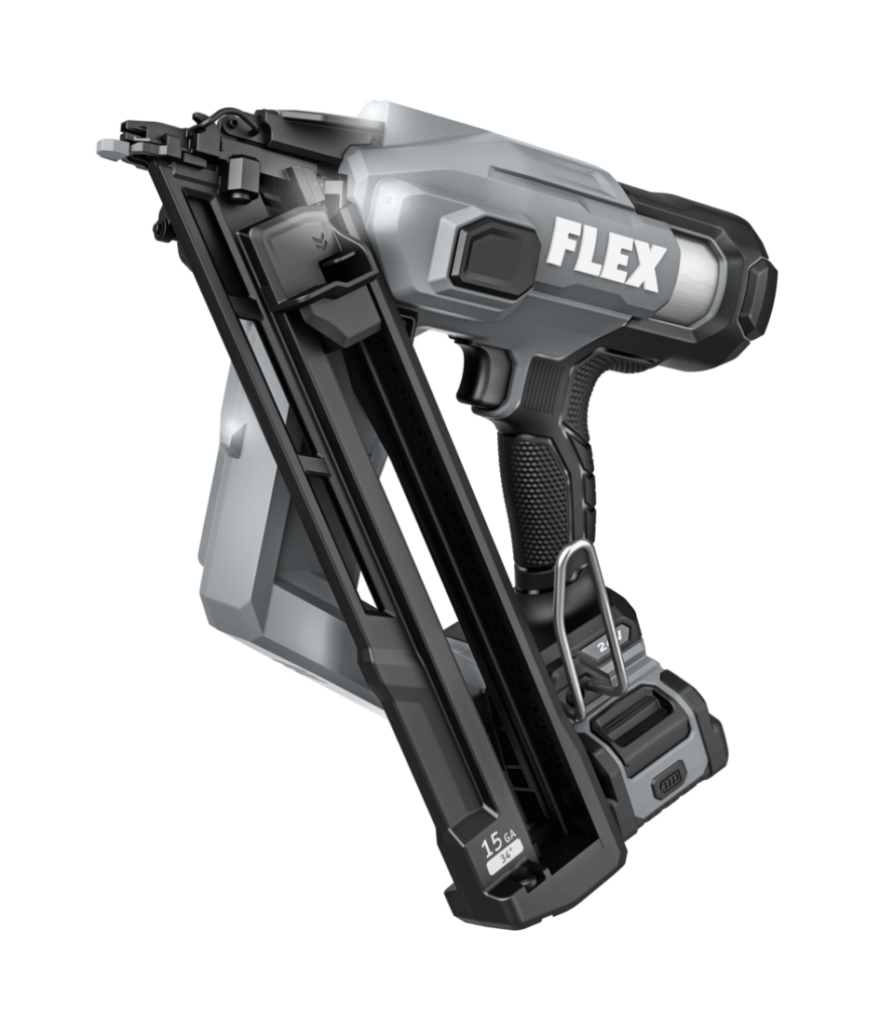
Features
- Triple LED lights for shadow-free visibility
- 34-degree angled magazine for easier access in tight corners and hard-to-reach spaces
- Includes three no-mar tips to protect delicate surfaces from damage
- Accepts 1-1/4-inch to 2-1/2-inch 15-gauge fasteners
- Heavy-duty belt clip, adjustable for left- or right-hand use
- Drives up to 1,200 nails per charge with a 2.5Ah battery
The FLEX 15Ga Angled Finish Nailer stands out for its angled magazine, which improves maneuverability in tight spaces, making it a top choice for tasks like installing crown molding or door casings. The inclusion of no-mar tips adds an extra layer of protection for delicate surfaces, which is especially useful for high-visibility finish work. Users appreciate its cordless convenience and shadow-free LED lights, but some note that its weight is not ideal for work during longer sessions.
16Ga Angled Finish Nailer
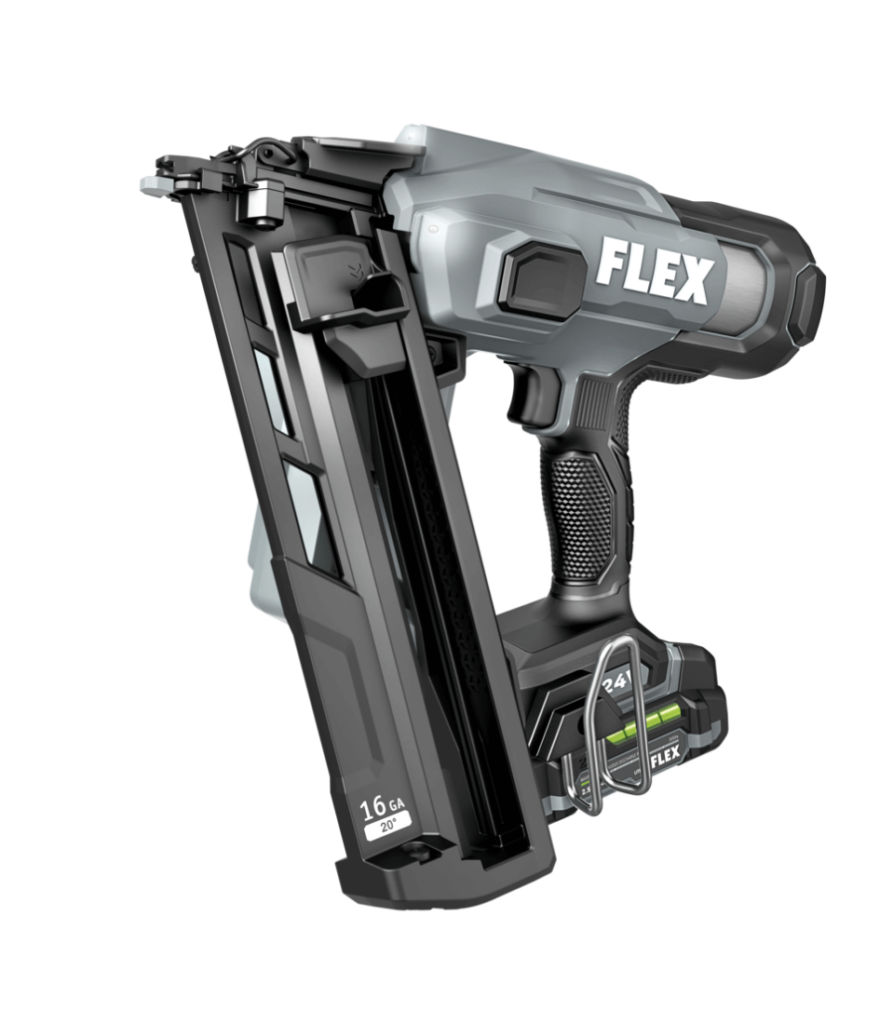
Features
- Slightly more compact and lightweight compared to the 15Ga for easier handling
- Accepts 16-gauge angled finish nails for smaller nail holes and a cleaner finish
- Drives up to 1,500 nails per charge with a 2.5Ah battery
The 16Ga Angled Finish Nailer offers smaller nail holes than the 15Ga, making it ideal for projects where aesthetics matter, such as trim and molding. Its lighter design provides greater comfort during extended use, though the thinner nails offer slightly less holding power for heavier-duty tasks.
21° Framing Nailer Kit
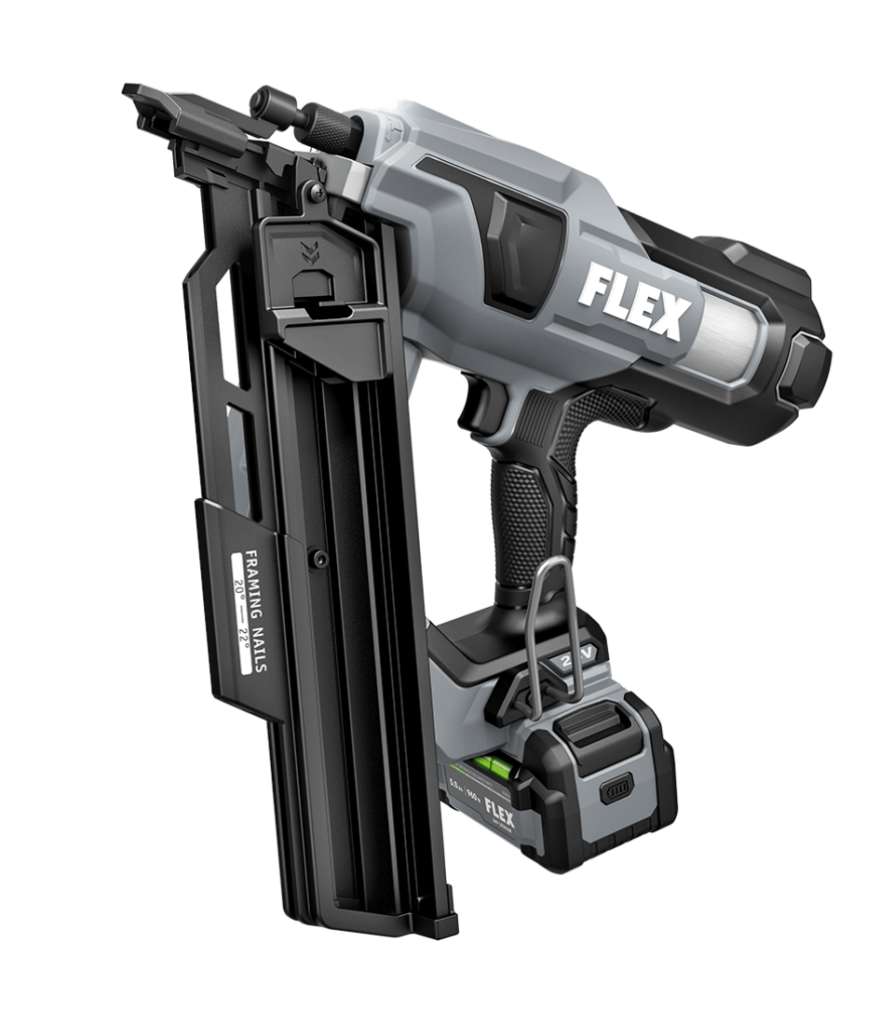
Features
- Weighs 9.33 lbs
- 21-degree magazine angle
- Accepts nails ranging from 2 inches to 3 1/2 inches
- Drives up to 3 nails per second with zero ramp-up time
- Capable of driving up to 1,100 nails on a single charge
The FLEX 21° Framing Nailer Kit is built for heavy-duty framing tasks like walls, floors, and roofing, offering reliable power and performance. Its ability to drive full round-head nails meets the structural demands of most building codes, making it a go-to for professional contractors. However, with a runtime of 1,100 nails per charge, it falls slightly behind other models in efficiency, particularly on large-scale projects. The 21-degree magazine design allows better access in tight spaces compared to straight models, but some users note that the tool’s weight can cause fatigue during extended use. Overall, this nailer is a solid choice for professionals prioritizing strength and mobility on job sites.
18GA Brad Nailer Kit
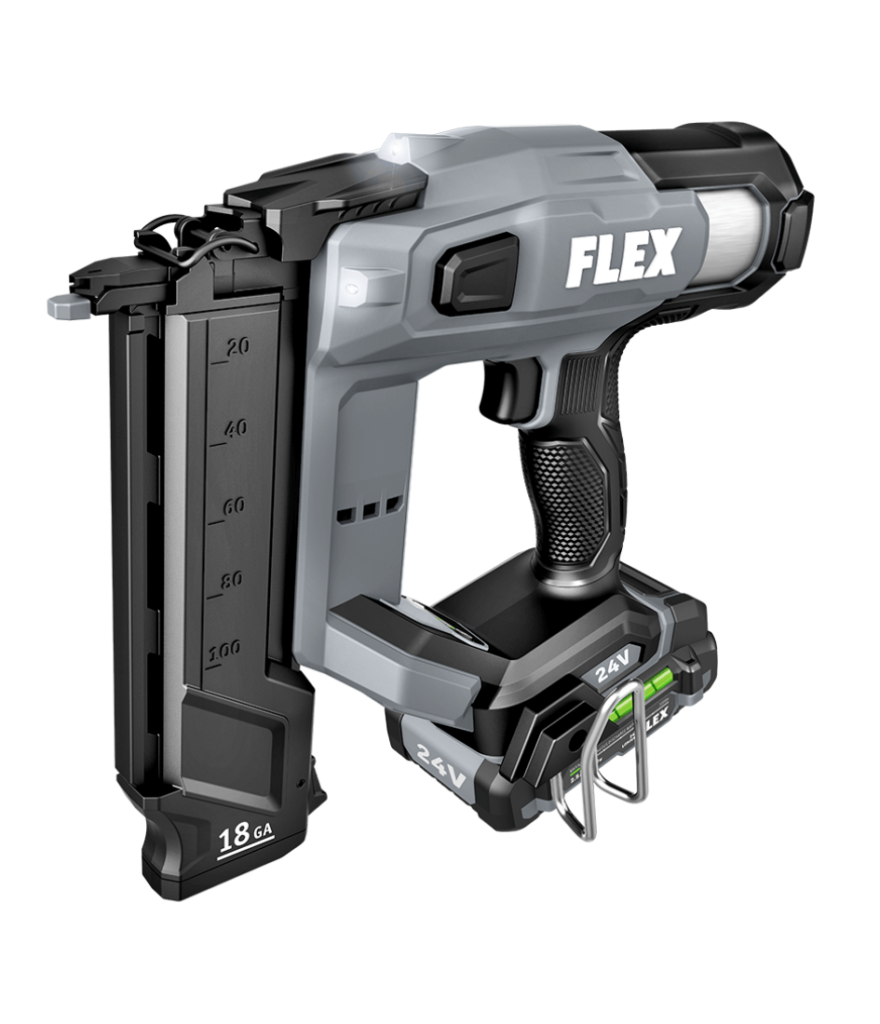
Features
- Weighs 4.8 lbs
- Accepts 18-gauge brad nails ranging from 5/8 inch to 2-1/8 inches
- Drives up to 2,200 nails per charge with a 2.5Ah battery
- Compact and lightweight design for reduced user fatigue
The FLEX 18GA Brad Nailer Kit is tailored for delicate trim work, cabinetry, and other precision tasks where smaller 18-gauge nails are ideal. Its compact and lightweight design enhances maneuverability, making it easier to handle in tight spaces than heavier models like the 16GA or 15GA nailers. With the capacity to drive up to 2,200 nails per charge, it offers extended runtime, though some users have noted occasional jams during rapid firing. Overall, this brad nailer is suitable for professionals and DIY enthusiasts seeking a tool for fine finish work.
18Ga 1/4″ Narrow Crown Stapler Kit
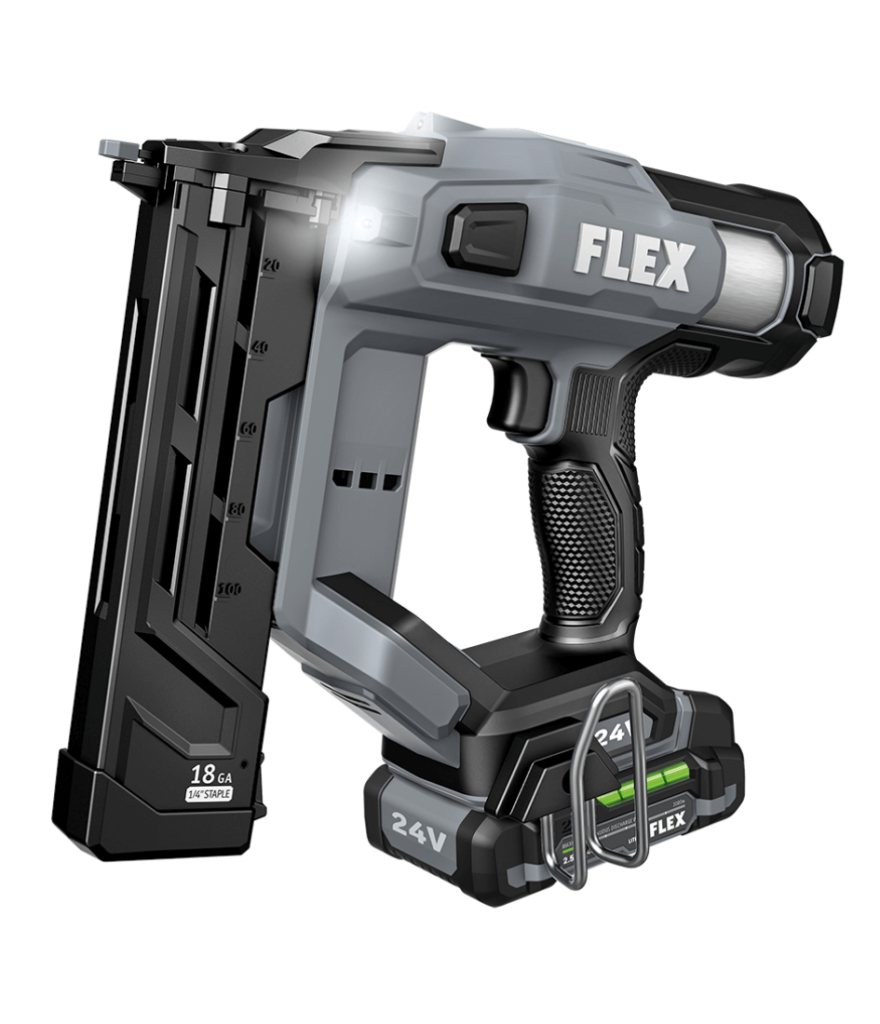
Features
- Weighs 4.8 lbs
- Accepts 18-gauge, 1/4-inch narrow crown staples ranging from 3/8 inch to 1-1/2 inches
- Drives up to 2,200 staples per charge with a 2.5Ah battery
- Compact and lightweight design for reduced user fatigue
The FLEX 18Ga 1/4″ Narrow Crown Stapler Kit is tailored for applications like subfloor installation, upholstery, and light trim work, where staples provide superior holding over nails. Its ability to drive up to 2,200 staples per charge offers extended runtime, though users have noted occasional jams during rapid firing. Some users have also said that it struggles in cold temperatures and on hardwoods. Overall, though, its lightweight design and reliability have made it a favorite for subfloor installation or any overhead work.
3/8″ Stapler Kit
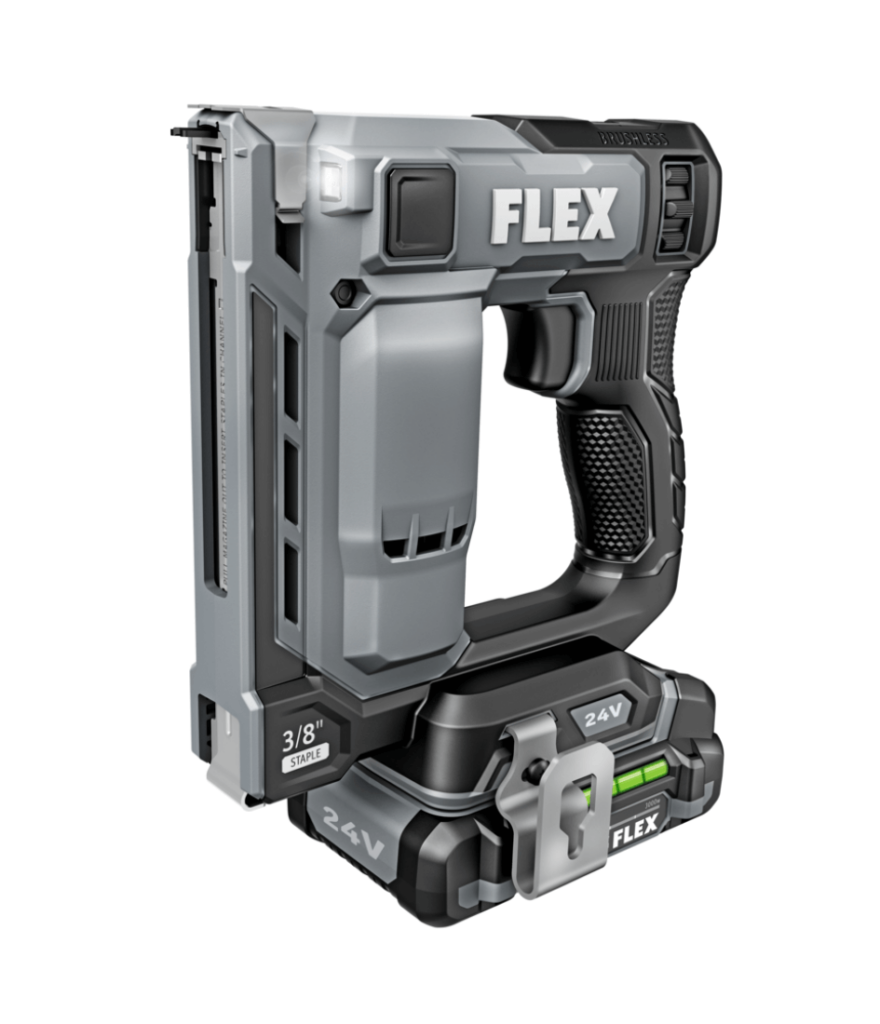
Features
- Features a low-staple indicator for better workflow efficiency
- Accepts 3/8-inch crown staples ranging from 1/4 inch to 9/16 inch
- Drives up to 5,000 staples per charge
- Weighs 2.76 lbs
The FLEX 3/8″ Stapler Kit is designed for specialized tasks like installing insulation, house wrap, and carpeting. Its standout feature is the low-staple indicator, which minimizes downtime by letting users know when it’s time to reload—a small but effective addition that isn’t common across all staplers. Compared to heavier-duty staplers, this model excels in precision and extended work. Users appreciate its ergonomic design for extended use but note that it’s less effective for tasks requiring deeper penetration or heavier fastening.
How to choose the right nailer or stapler
Selecting the appropriate nailer or stapler is key to achieving the best project results. Each tool is designed for specific tasks, and understanding their differences will help you make the right choice.
- Finish nailers: Ideal for tasks requiring a clean, polished appearance, such as installing trim, baseboards, and crown molding. They use relatively thin nails, leaving minimal marks that are easily concealable, making them suitable for cabinetry, furniture making, and decorative woodwork.
- Brad nailers: Brad nailers are suitable for light or temporary holds, crafting, and projects requiring hidden fasteners. They are perfect for building frames for art or mirrors, attaching decorative elements to furniture, and constructing small woodworking projects like birdhouses and boxes.
- Framing nailers: These nailers are designed for structural tasks such as framing walls, floors, and roofs. They use larger, thicker nails for maximum holding power. Their angled magazines make them suitable for tight spaces and are often required for projects meeting strict building codes. However, due to their larger nail size and potential surface damage, they are less suited for precision or aesthetic tasks.
- Staplers: Offer superior holding power for heavy-duty tasks like roofing, flooring, and framing. They are suitable for tasks that demand a sturdy connection, such as securing insulation or fastening sheathing. However, the wider staples can leave more noticeable marks, which may not be ideal for projects requiring a polished finish.
When deciding what tools to use, consider the specific requirements of your project since choosing the right tool depends on the particular requirements of your task—strength, precision, or a combination of both.
Bottom line
FLEX nailers and staplers offer a wide range of options tailored to different tasks, from delicate trim work to heavy-duty construction. Understanding each tool’s unique features and strengths is essential to making the right choice for your projects. Whether you’re a professional contractor or a DIY enthusiast, FLEX’s cordless designs, versatility, and reliable performance make them a strong contender in any tool arsenal.
Don’t miss the latest tips, tool guides, and exclusive deals to elevate your projects! Subscribe to our newsletter and follow us on social media for access to insider insights that professionals use to work smarter—not harder.
